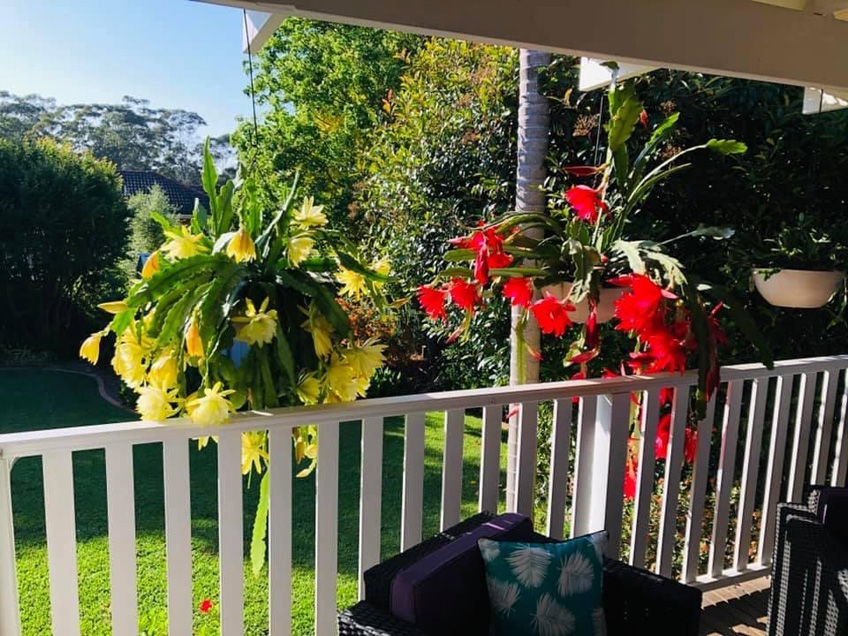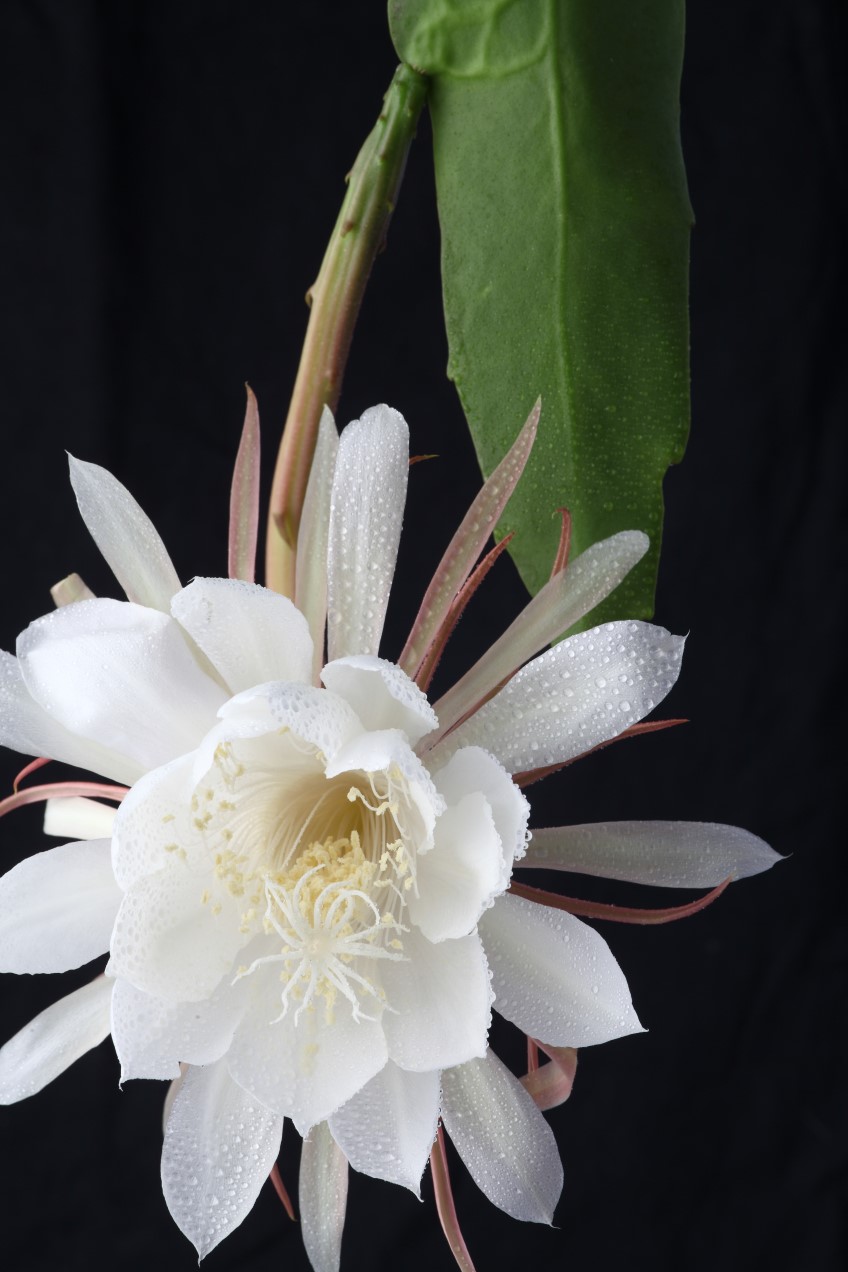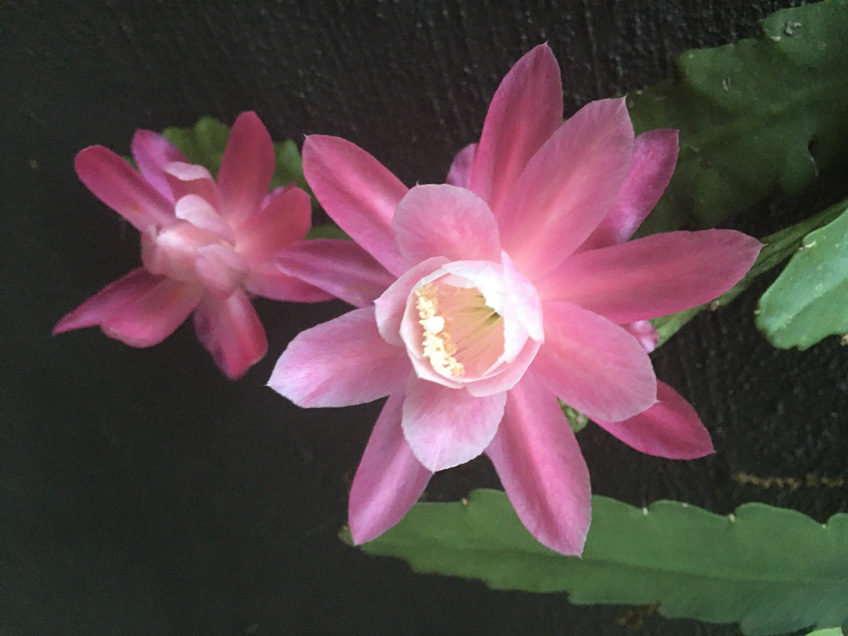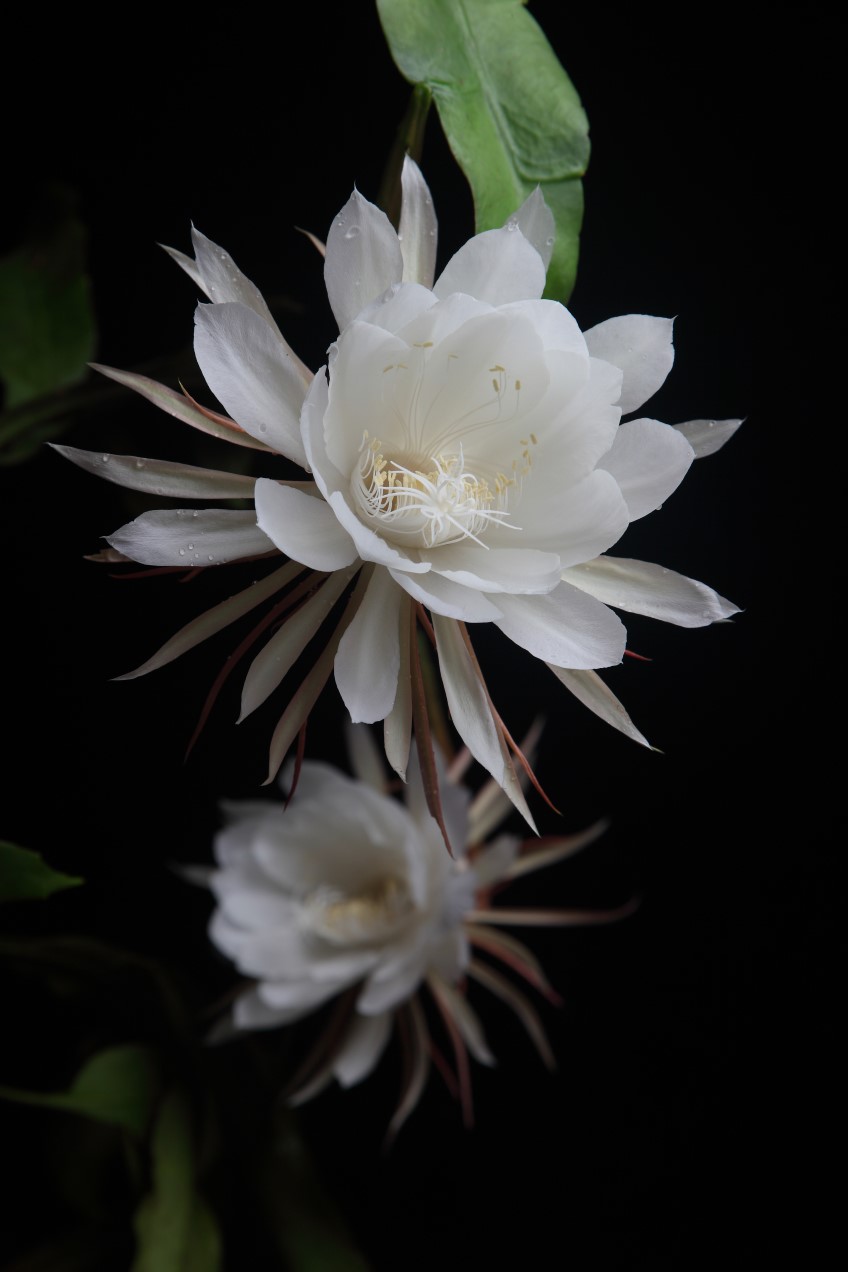Orchid cactus (Disocactus ackermannii) come in a range of colours. We know them as epiphyllum.
You have to stay up late to enjoy the opening of the Queen Of The Night cactus, which is shaped like a majestic waterlily. The queen of the night cactus flowers between dusk and dawn. But other orchid cactus flower during the day and can be grown in a basket producing masses of cascading flower all through late spring.

These baskets (pictured) were grown by our Garden Clinic member, Rae Gill and her son Stephen, from plants she bought more than 30-45 years ago at Carlingford Produce in Sydney. This epiphytic plant comes from the jungles of Central America where it grows on trees.
We grow the huge cream flowering Epiphyllum oxypetalum ‘Queen of the Night’ over a dark painted wall to accentuate the flowers. It loves good
drainage, frost-free filtered sunshine and slightly moist soil, drier in winter.
White sweetly scented circular-shaped flowers with narrow petals adorn this nocturnal flowering species. Growth is flat and long with spineless branches
that are modified stems. These become pendulous and drape, perfect for hanging pots. Flowers are large, white and fragrant. They like morning
sun, light or filtered light, but dislike the hot afternoon sun and the leaves will tend to yellow in this position.

Dazzling beauties. Photo - Yongkang Duan/Shutterstock.com
Hybrid Orchid Cactus typically open at night but often last well through the next day. Epiphyllum is one of the few true jungle cacti, often found growing
with orchids and bromeliads far removed from the forest floor. If pollinated the flowers can mature into deliciously edible fruit
The popular hybrid ‘German Empress’ (Deutsche Kaiserin) has profuse small rose-pink blooms that last for weeks in spring. Easy to grow and to
propagate from leaf cuttings.

‘German Empress’ (Deutsche Kaiserin)
Orchid cacti do best when allowed to grow through other shrubs (to prop them up) or through small trees like frangipani. They enjoy the heat and a little
shade. We find them easy and undemanding to grow.
In its natural state, this epiphytic cactus hails from tropical rain forests of Mexico, grows in the tree tops, and lives on the surface of other plants,
hitching a ride up out of the gloomy jungle under-storey. It takes nourishment from the environment, not the host plant; but from fallen leaves, bird
droppings and dead insects.
Orchid cactus come in many colours. Search out the hot pink and fire engine red for a dazzling display. They grow best from leaf cuttings, which can simply
be pressed straight into the garden bed. No need to root them first.
Care
Morning sun will increase flower numbers. Stems can become slightly yellow in strong light although some think this is a minor cost for an increase in
beautiful flower blooms. They dislike over-watering and prefer mild winters. Keep slightly dry through cool weather and water more often in summer.
Feed during spring with a mild liquid feed in the growth season to encourage more shoots and therefore more blooms. The leaves are modified stems,
adapted to cling to the host tree as well as photosynthesize.
Epiphyllums are easy to grow in large hanging baskets or supported in a large pot with stakes or trellis. We like to grow our E. oxypetalum up
into the branches of frangipani - as they flower at the same time. Epiphyllums are easy to grow in large hanging basket or supported in a
large pot with stakes or trellis. We like to grow ours up the branches of frangipani - as they flower at the same time. We also have some growing down
the side garden in a garden with filtered light along with begonia, cape angels, tropical rhodos, camellias, and liriope. We can see the buds appear
from the kitchen window while we do the washing up.
E. stricta does not spread to the same extent as some other commonly named ‘Queen of the Night’ species but gee whiz do they hang! With wavy seaweed
like leaves that can drape 1.5m down. Flowers do persist well into the early morning unlike E. oxypetalum, we find they open until 10am
and occur later in the season, sometimes well into autumn.

Luminous flowers lure nocturnal pollinators like moths. Photo - AJP/Shutterstock.com
Our favourite
E. oxypetalum This is not the tall cactus variety (which many people grow and also flowers at night), this Queen of the Night has long succulent
green leaves and climbs trees if given the chance. This summer flowering cactus is the most widely cultivated species of the genus. A climbing
perennial cactus, it is best positioned somewhere visible at night, as it flowers nocturnally, each flower but for one night only, with an intoxicating
sweet fragrance. The flower is finished at dawn. Ours usually starts flowering at Christmas and can flower throughout January. If you are party people
remember to check the buds as they swell when you come home at night - as it is disappointing to miss the divine waterlily-like flowers.
Propagate by cutting from the long flat arching stems. Allow it to dry out for a few days before planting into very well drained potting media. Keep slightly
dry through cool weather and water more often in summer. Feed during spring during the growth season to encourage more long cane-like shoots and therefore
more blooms.